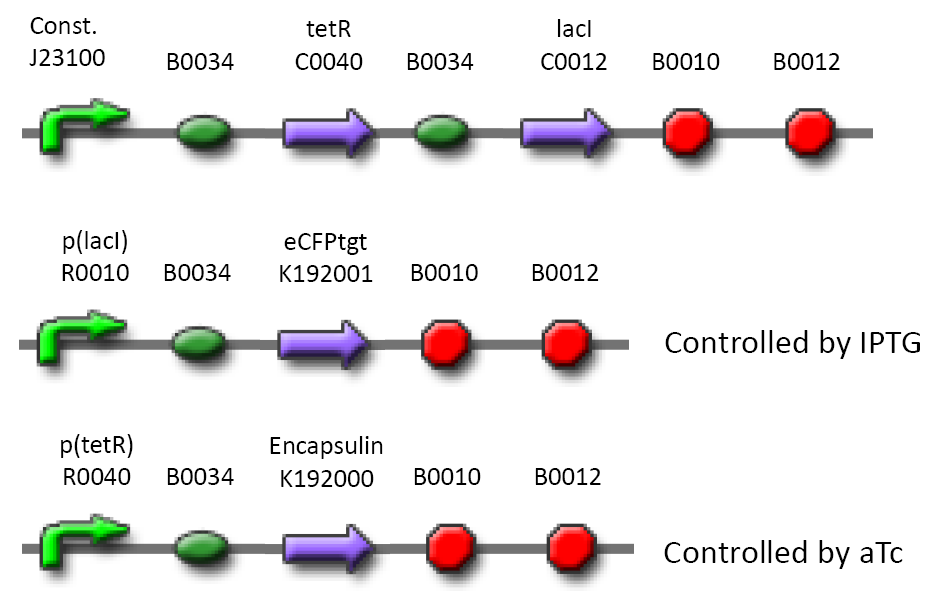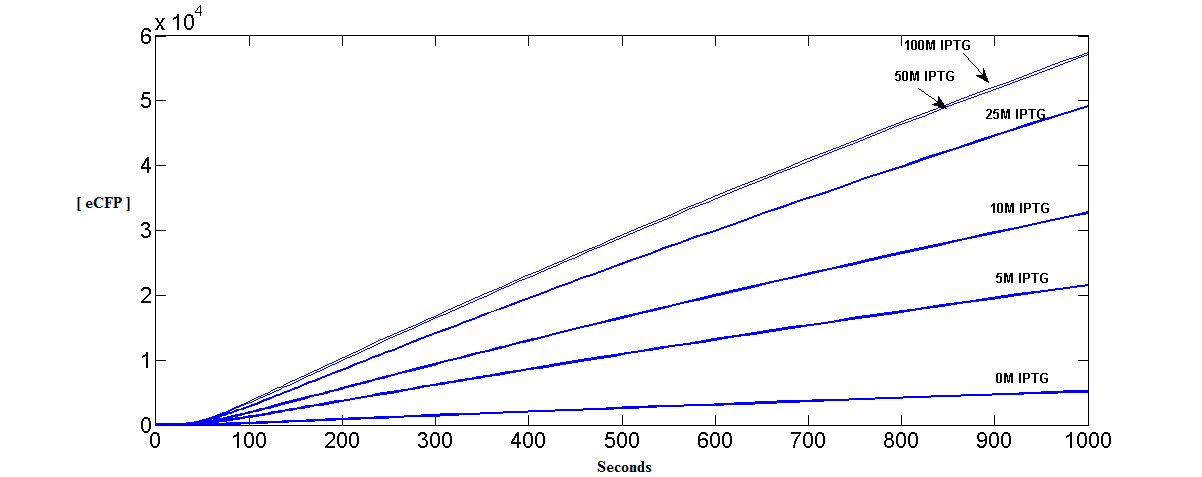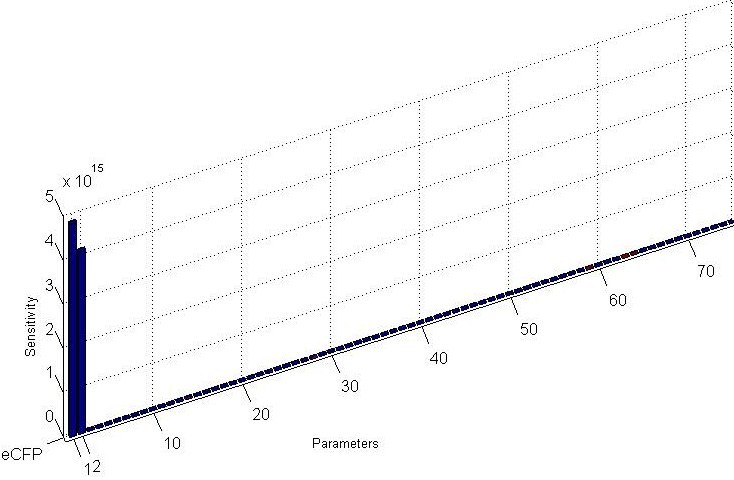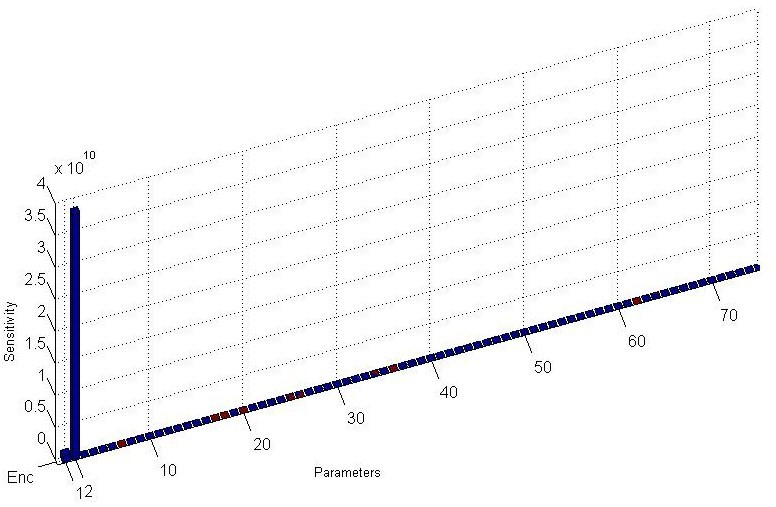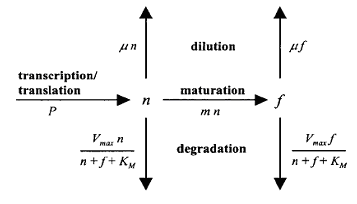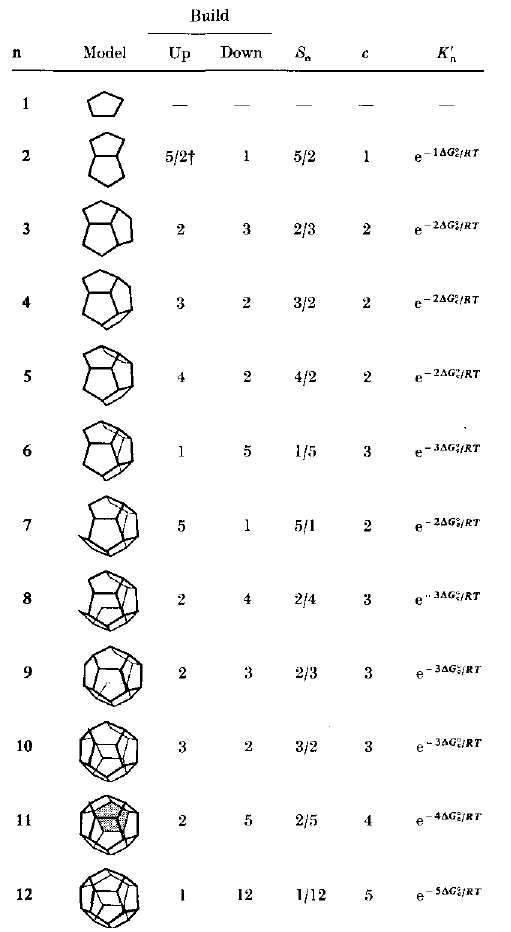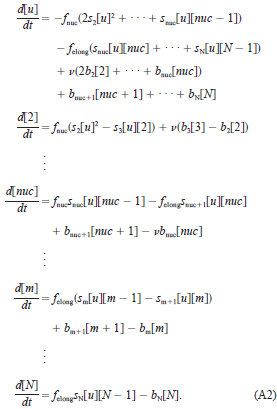Team:TorontoMaRSDiscovery/Modeling
From 2009.igem.org
| (96 intermediate revisions not shown) | |||
| Line 1: | Line 1: | ||
| - | [[image: | + | [[image:To_igem_wiki_banner.jpg|965px]] |
| - | {| style="color: | + | {| style="color:white;background-color:#99CCFF;" height:100px cellpadding="2" cellspacing="0" border="0" width="100%" align="center" class="menu" |
!align="center"|[[Team:TorontoMaRSDiscovery|Home]] | !align="center"|[[Team:TorontoMaRSDiscovery|Home]] | ||
!align="center"|[[Team:TorontoMaRSDiscovery/Team|The Team]] | !align="center"|[[Team:TorontoMaRSDiscovery/Team|The Team]] | ||
!align="center"|[[Team:TorontoMaRSDiscovery/Project|The Project]] | !align="center"|[[Team:TorontoMaRSDiscovery/Project|The Project]] | ||
| - | !align="center"|[[Team:TorontoMaRSDiscovery/Parts| | + | !align="center"|[[Team:TorontoMaRSDiscovery/Parts|BioBricks]] |
| - | !align="center"|[[Team:TorontoMaRSDiscovery/Modeling| | + | !align="center"|[[Team:TorontoMaRSDiscovery/Modeling|Modelling]] |
!align="center"|[[Team:TorontoMaRSDiscovery/Bioinformatics|Bioinformatics]] | !align="center"|[[Team:TorontoMaRSDiscovery/Bioinformatics|Bioinformatics]] | ||
| + | !align="center"|[[Team:TorontoMaRSDiscovery/Safety|Safety]] | ||
!align="center"|[[Team:TorontoMaRSDiscovery/Notebook|Notebook]] | !align="center"|[[Team:TorontoMaRSDiscovery/Notebook|Notebook]] | ||
|} | |} | ||
<br> | <br> | ||
| - | + | <p style="font-size:18pt;">Modelling the production of eCFP, Encapsulin, and Encapsulin microcompartments</p> | |
=Summary= | =Summary= | ||
| - | + | A kinetic model of our system has been constructed. Approximate parameter values were gathered from online resources to represent all processes up to the production of the eCFP and Encapsulin proteins. Current simulations predict the production of these two proteins at various initial concentrations of IPTG and aTc effector molecules. A sensitivity analysis reveals that the rate of constitutive expression of lacI and tetR has the greatest effect on eCFP and Encapsulin concentrations. Furthermore, we have outlined approaches for the detailed modelling of the eCFP degredation/maturation and Encapsulin assembly pathways. | |
| - | |||
| - | + | The initial simulations will be used to identify a critical concentration of Encapsulin mononomer required for microcompartment assembly. To strengthen the model, the constitutive expression rate of BBa_J23100 (our most sensitive parameter) will be experimentally determined. Subsequently, a detailed model of Encapsulin assembly will be integrated into the current model, and its parameters filled-in using parameter-scanning methods and experiments outlined in the relevant references. By comparing experimental measures of microcompartment formation with that predicted by the kinetic model, we aim to gain insight on the mechanisms of Encapsulin assembly. | |
=Model= | =Model= | ||
| - | + | Our model is based on the following design (See [https://2009.igem.org/Team:TorontoMaRSDiscovery/Project Project Page] for a full description of this system). | |
| - | + | ||
| - | + | [[image:tmdt_design2.png|center|600px|The Encapsulator]] | |
| - | The | + | The reaction framework was mainly generated using the [http://synbioss.sourceforge.net/ SynBioSS Designer (a really useful modeling tool for iGEM teams)], which also provides default parameter values. These parameter values have been gathered from various literature [http://neptune.cems.umn.edu/designer/designer_defaults.pdf sources], and should be taken as approximations. All units were taken to be (1 / molarity^n-1 * s), where n is the order of the reaction. For example, for the reaction 2 lacI --> lacI2, n = 2, thus the rate constant has the units 1/molarity*s. |
| + | The pathways for the expressed proteins, eCFPt and Encapsulin, need to be modeled in more detail. For example, in this basic model eCFPt is degraded via a first order reaction and Encapsulin makes a dimer complex. However, in reality fluorescent proteins have been shown to degreade via Micheales-menton kinetics and Encapsulin is thought to make a complex of about 60 monomers. These issues will be addressed in future work. | ||
| + | '''The reactions can be accessed here:''' | ||
| - | + | [[The Encapsulator Model]] (opens new page) | |
| - | + | ||
| - | + | ||
| - | + | ||
| - | + | ||
| - | + | ||
| - | + | ||
| - | + | ||
| - | + | [[Media:Uft_mod_Rxns2.xls|Download Encapsulator Model ]] (download Excel file) | |
| - | + | ||
| - | + | ||
| - | + | ||
| - | + | ||
| - | + | ||
| - | + | ||
| - | + | ||
| - | + | ||
| - | + | ||
| - | + | ||
| - | + | ||
| - | + | ||
| - | + | ||
| - | + | ||
| - | + | ||
| - | + | ||
| - | + | ||
| - | + | ||
| - | + | ||
| - | + | ||
| - | + | ||
| - | + | ||
| - | + | ||
| - | + | ||
| - | + | ||
| - | + | ||
| - | + | ||
| - | + | ||
| - | + | ||
| - | + | ||
| - | + | ||
| - | + | ||
| - | + | ||
| - | + | ||
| - | + | ||
| - | + | ||
| - | + | ||
| - | + | ||
| - | + | ||
| - | + | ||
| - | + | ||
| - | + | ||
| - | + | ||
| - | + | ||
| - | + | ||
| - | + | ||
| - | + | ||
| - | + | ||
| - | + | ||
| - | + | ||
| - | + | ||
| - | + | ||
| - | + | ||
| - | + | ||
| - | + | ||
| - | + | ||
| - | + | ||
| - | + | ||
| - | + | ||
| - | + | ||
| - | + | ||
| - | + | ||
| - | + | ||
| - | + | ||
| - | + | ||
| - | + | ||
| - | + | ||
| - | + | ||
| - | + | ||
| - | + | ||
| - | + | ||
| - | + | ||
| - | + | ||
| - | + | ||
| - | + | ||
| - | + | ||
| - | + | ||
| - | + | ||
| - | + | ||
| - | + | ||
| - | + | ||
| - | + | ||
| - | + | ||
| - | + | ||
| - | + | ||
| - | + | ||
| - | + | ||
| - | + | ||
| - | + | ||
| - | + | ||
| - | + | ||
| - | + | ||
| - | + | ||
| - | + | ||
| - | + | ||
| - | + | ||
| - | + | ||
| - | + | ||
| - | + | ||
| - | + | ||
| - | + | ||
| - | + | ||
| - | + | ||
| - | + | ||
| - | + | ||
| - | + | ||
| - | + | ||
| - | + | ||
| - | + | ||
| - | + | ||
| - | + | ||
| - | + | ||
| - | + | ||
| - | + | ||
| - | + | ||
| - | + | ||
| - | + | ||
| - | + | ||
| - | + | ||
=Simulations= | =Simulations= | ||
| - | All simulations were carried out using the [https://2009.igem.org/Partner_Offers SimBiology Matlab Toolbox], which was freely available to iGEM teams. | + | All simulations were carried out using the [https://2009.igem.org/Partner_Offers SimBiology Matlab Toolbox], which was freely available to iGEM teams. |
| - | ===Accumulation of | + | ===Accumulation of eCFP at Different Initial Concentrations of IPTG=== |
| - | + | ||
| - | + | ||
| - | + | [[Image:uft_mod_cfp-iptg.png | 900px]] | |
| - | + | The IPTG effector eventually loses effect, and the eCFP concentration approaches a maximum. This happens because the IPTG proteins eventually ''tie up'' all available LacI4 proteins, leaving the transcription and translation of eCFP to operate at its maxiumum rate. | |
| - | + | ||
| - | + | ||
| - | + | ===Accumulation of Encapsulin monomer at Different Initial Concentrations of aTc=== | |
| + | |||
| + | [[Image:uft_mod_enc-atc.png | 900px]] | ||
| + | |||
| + | (NOTE: in order to observe Encapsulin monomer levels, the above simulations were carried out without any Encapsulin assembly reactions in place) | ||
| + | |||
| + | The production of Encapsulin occurs at a slower rate than eCFP because the BBa_R0040 promoter has two tetR binding sites, resulting in more repression and more off-pathway scenarios. Thus, the Encapsulin concentration also seems assymptotic but at higher concentrations of aTc (relative to IPTG). | ||
| + | |||
| + | It seems beneficial to have the Encapsulin protein under control of the BBa_R0040-tetR-aTc construct because at zero levels of aTc we can have essentially zero levels of Encapsulin (whereas even at zero levels of IPTG, there is still significantly more eCFP). This will enable us to probe extremely low concentrations of Encapsulin monomer when testing for optimal Encapsulin assembly conditions. The disadvantage is that if Encapsulin assembly requires a very high initial concentration of Encapsulin monomer, we would have to wait a long time to see microcompartments. If this later scenario is observed, it may be better to switch the eCFP and Encapsulin expression systems. | ||
===Sensitivity Analysis=== | ===Sensitivity Analysis=== | ||
| - | + | Since all of our parameters are approximations from literature sources, those which have the greatest affect on system dynamics (ie. the most ''sensitive'' parameters) would be leading candidates to be experimentally determined. Currently we are interested in the parameters that have the greatest effect on the production of eCFP and Encapsulin. Ideally, it would be best to tighten-up the model by experimentally determining these, before incorporating the largely unexplored Encapsulin assembly pathways. | |
| - | |||
| - | + | '''1) Sensitivity of eCFP Production''' | |
| - | + | [[Image:uft_mod_SAecfp.png | centre | 600px]] | |
| + | |||
| + | |||
| + | |||
| + | '''2) Sensitivity of Encapsulin Production''' | ||
| + | |||
| + | [[Image:uft_mod_SAenc.png | centre | 600px]] | ||
| + | |||
| + | Parameters 1 and 2 correspond to the rates of constitutive expression of the repressors lacI and tetR respectively. Thus, it is predicted that eCFP and Encapsulin production is largely sensitive to the expression rates of lacI and tetR. | ||
| + | |||
| + | The specific constitutive promoter used in our construct is BBa_J23100. In our model, this was given the generic rate of 1E-10 molarity\s by SynBioSS based on a variety of empirically-fitted protein expression rates found in literature. This generic approach to assigning parameter values is a suitable fist-step, but our sensitivity results suggest that experimentally determining the expression rate of BBa_J23100 should significantly improve our model's predictive capability. | ||
| - | + | =Future Work= | |
| - | + | Improvements to the basic model presented above can be separated into three areas; 1) performing experiments to determine parameter values that are specific to our system, 2) more detailed modeling of eCFPt behavior, 3) more detailed modeling of Encapsulin assembly. | |
| + | The experiments required to determine general transcription and translation parameters need to be further researched, so this will be skipped over for now. Here we will discuss the more interesting areas – the detailed modeling of eCFP and Encapsulin pathways. This will be accomplished by incorporating previous modeling efforts that are applicable to the eCFP and Encapsulin proteins. | ||
| - | ===Degredation of | + | ===Maturation and Degredation of eCFP=== |
The expression and degradation of [http://www.pubmedcentral.nih.gov/picrender.fcgi?artid=95514&blobtype=pdf Green Fluorescent Protein (GFP) was modeled previously]. This paper noted that GFP must mature before going into fluorescent phase, and GFP degradation was shown to follow M-M kinetics, as depicted below. This paper also outlined how the degradation parameters could be derived for any expression system using only simple fluorescence and optical density measurements. | The expression and degradation of [http://www.pubmedcentral.nih.gov/picrender.fcgi?artid=95514&blobtype=pdf Green Fluorescent Protein (GFP) was modeled previously]. This paper noted that GFP must mature before going into fluorescent phase, and GFP degradation was shown to follow M-M kinetics, as depicted below. This paper also outlined how the degradation parameters could be derived for any expression system using only simple fluorescence and optical density measurements. | ||
| - | [[Image:uft_mod_ecfp1.png]] | + | [[Image:uft_mod_ecfp1.png | centre | thumb | Degredation and maturation pathways for eCFP. (Leveau and Lindow 2001)]] |
| Line 201: | Line 90: | ||
<html> | <html> | ||
| + | <centre> | ||
<table> | <table> | ||
<tr><td> m = 0.0004279 1/s </td></tr> | <tr><td> m = 0.0004279 1/s </td></tr> | ||
| Line 207: | Line 97: | ||
<tr><td> </td></tr> | <tr><td> </td></tr> | ||
</table> | </table> | ||
| + | </centre> | ||
</html> | </html> | ||
| - | Assuming | + | Assuming eCFP would behave similarly to eGFP, the following additional reactions would be included in the model: |
<html> | <html> | ||
| Line 216: | Line 107: | ||
<tr> <td><b> Maturation </b></td> <td> </td> </tr> | <tr> <td><b> Maturation </b></td> <td> </td> </tr> | ||
<tr> <td> eCFPt --> F_eCFPT </td> <td> 0.0004279 </td> </tr> | <tr> <td> eCFPt --> F_eCFPT </td> <td> 0.0004279 </td> </tr> | ||
| - | |||
| - | |||
| - | |||
| - | |||
| - | |||
| - | |||
<tr> <td> </td> <td> </td> </tr> | <tr> <td> </td> <td> </td> </tr> | ||
<tr> <td><b> Degradation </b></td> <td> </td> </tr> | <tr> <td><b> Degradation </b></td> <td> </td> </tr> | ||
| Line 231: | Line 116: | ||
</html> | </html> | ||
| + | ===Assembly of Encapsulin Microcompartments=== | ||
| - | + | Though Encapsulin microcompartment assembly is not well-studied, it has been theorized to resemble the assembly of viral capsids. Thus, we could look to this relatively well-studied phenomenon as a representation of Encapsulin microcompartment assembly. | |
| - | + | ||
| - | Though Encapsulin microcompartment assembly is not well-studied, it has been theorized to resemble the assembly of viral capsids. Thus, we could look to | + | |
| - | + | ||
| - | + | ||
| - | + | ||
| - | + | ||
| - | + | ||
| - | + | ||
| - | + | ||
| - | + | ||
| - | + | ||
| - | + | ||
| - | + | ||
| - | + | ||
| - | + | ||
| - | + | ||
| - | + | ||
| - | + | ||
| - | + | ||
| - | + | ||
| - | + | ||
| - | + | ||
| - | + | ||
| - | + | ||
| - | + | ||
| - | + | ||
| - | + | ||
| - | + | ||
| - | + | ||
| - | + | ||
| - | + | ||
| - | + | ||
| - | + | ||
| + | Adam Zlotnick has published models of viral capsid assembly using different approaches. An early paper described an equilibrium model of assembly for a 12-unit polyhedral capsid head, and a more recent paper used a kinetic model that could be applied to many examples of spherical polymerization. We will consider how each approach could be incorporated as a representation of Encapsulin assembly. | ||
| + | '''1) Equilibrim Approach to Encapsulin Assembly''' | ||
| + | Zlotnick's [[Media:Uft_mod_to_build_a_virus_capsid.pdf|equilibrium-based model]] consists of reactions from an initial monomer subunit leading to a final capsid product. The sequential reactions take into account DeltaG for contact (Kn'), and parameters describing path degeneracy (varies for different intermediates). | ||
| + | [[image:uft_mod_encap1.png|centre|thumb|Kn for assembly subunits based on path degeneracy. (Zlotnick 1994)]] | ||
| + | '''2) Kinetic Model of Spherical Polymerization''' | ||
| + | A [http://www.ncbi.nlm.nih.gov/pmc/articles/PMC1302223/pdf/12124301.pdf general kinetic model for the spherical polyermization] process is shown below. In our case, the initial monomer subunit concentration (''u'') would represent our expressed Encapsulin BioBrick, and the number of monomers in the final assembly (''N'') is thought to be 60. All of the included parameters can be calculated from the four basic parameters; the microscopic, per-contact equilibrium constant (KAcon), the nucleus size (nuc), the nucleation on-rate (f_nuc), and the elongation on-rate (f_elong). The referenced paper describes methods to aquire these parameters from kinetic experiments, and provides examples for N = 12 and 30 unit viral capsid assemblies. | ||
| + | [[image:uft_mod_encap2.png| centre | thumb |System of ODEs to represent spherical polymerization, where ''u'' is the initial subunit concentration, ''m'' is the "mth" intermediate species, and ''N'' is the number of monomers in the final assembly. (Endres and Zlotnick 2002)]] | ||
| - | |||
| - | |||
| - | + | Zlotnick's models also describe two important features of spherical polymerization that we should also expect to observe in Encapsulin assembly: kinetic trapping and nucleation. A kinetic trap occurs when the initial monomer subunit concentration or the release of Gibbs free energy (deltaG) of the first assembly reaction is too high. This results in over-initiation of assembly and the reactions quickly become starved for subunits. Kinetic trapping is prevented by nucleation, where the initial reactions occur at a slower rate because the first few intermediates in a series of reactions are less stable than downstream products. Essentially, nucleation serves as a “slow first step” that regulates the assembly pathway. | |
| - | + | It will be interesting to note how the translational dynamics of Encapsulin interplay with its assembly dynamics. Since our system does not start with any initial concentration of Encapsulin, there will be an optimum rate of production that essentially serves the role of nucleation – avoiding kinetic traps while still maintaining a maximum production of full Encapsulin assemblies. | |
| - | + | =References= | |
| - | + | ||
| + | 1. Hill AD, Tomshine JR, Weeding EM, Sotiropoulos V, Kaznessis YN. ''SynBioSS: the synthetic biology modeling suite.'' Bioinformatics. 2008 Nov 1;24(21):2551-3. Epub 2008 Aug 30. | ||
| + | [http://neptune.cems.umn.edu/designer/interface1.php SynBioSS Web Designer] | ||
| - | + | 2. Leveau JH, Lindow SE. ''Predictive and interpretive simulation of green fluorescent protein expression in | |
| + | reporter bacteria.'' J Bacteriol. 2001 Dec;183(23):6752-62. | ||
| - | + | 3. Endres D, Zlotnick A. ''Model-based analysis of assembly kinetics for virus capsids or other spherical | |
| - | + | polymers.'' Biophys J. 2002 Aug;83(2):1217-30. | |
Latest revision as of 02:52, 22 October 2009
| Home | The Team | The Project | BioBricks | Modelling | Bioinformatics | Safety | Notebook |
|---|
Modelling the production of eCFP, Encapsulin, and Encapsulin microcompartments
Contents |
Summary
A kinetic model of our system has been constructed. Approximate parameter values were gathered from online resources to represent all processes up to the production of the eCFP and Encapsulin proteins. Current simulations predict the production of these two proteins at various initial concentrations of IPTG and aTc effector molecules. A sensitivity analysis reveals that the rate of constitutive expression of lacI and tetR has the greatest effect on eCFP and Encapsulin concentrations. Furthermore, we have outlined approaches for the detailed modelling of the eCFP degredation/maturation and Encapsulin assembly pathways.
The initial simulations will be used to identify a critical concentration of Encapsulin mononomer required for microcompartment assembly. To strengthen the model, the constitutive expression rate of BBa_J23100 (our most sensitive parameter) will be experimentally determined. Subsequently, a detailed model of Encapsulin assembly will be integrated into the current model, and its parameters filled-in using parameter-scanning methods and experiments outlined in the relevant references. By comparing experimental measures of microcompartment formation with that predicted by the kinetic model, we aim to gain insight on the mechanisms of Encapsulin assembly.
Model
Our model is based on the following design (See Project Page for a full description of this system).
The reaction framework was mainly generated using the [http://synbioss.sourceforge.net/ SynBioSS Designer (a really useful modeling tool for iGEM teams)], which also provides default parameter values. These parameter values have been gathered from various literature [http://neptune.cems.umn.edu/designer/designer_defaults.pdf sources], and should be taken as approximations. All units were taken to be (1 / molarity^n-1 * s), where n is the order of the reaction. For example, for the reaction 2 lacI --> lacI2, n = 2, thus the rate constant has the units 1/molarity*s.
The pathways for the expressed proteins, eCFPt and Encapsulin, need to be modeled in more detail. For example, in this basic model eCFPt is degraded via a first order reaction and Encapsulin makes a dimer complex. However, in reality fluorescent proteins have been shown to degreade via Micheales-menton kinetics and Encapsulin is thought to make a complex of about 60 monomers. These issues will be addressed in future work.
The reactions can be accessed here:
The Encapsulator Model (opens new page)
Download Encapsulator Model (download Excel file)
Simulations
All simulations were carried out using the SimBiology Matlab Toolbox, which was freely available to iGEM teams.
Accumulation of eCFP at Different Initial Concentrations of IPTG
The IPTG effector eventually loses effect, and the eCFP concentration approaches a maximum. This happens because the IPTG proteins eventually tie up all available LacI4 proteins, leaving the transcription and translation of eCFP to operate at its maxiumum rate.
Accumulation of Encapsulin monomer at Different Initial Concentrations of aTc
(NOTE: in order to observe Encapsulin monomer levels, the above simulations were carried out without any Encapsulin assembly reactions in place)
The production of Encapsulin occurs at a slower rate than eCFP because the BBa_R0040 promoter has two tetR binding sites, resulting in more repression and more off-pathway scenarios. Thus, the Encapsulin concentration also seems assymptotic but at higher concentrations of aTc (relative to IPTG).
It seems beneficial to have the Encapsulin protein under control of the BBa_R0040-tetR-aTc construct because at zero levels of aTc we can have essentially zero levels of Encapsulin (whereas even at zero levels of IPTG, there is still significantly more eCFP). This will enable us to probe extremely low concentrations of Encapsulin monomer when testing for optimal Encapsulin assembly conditions. The disadvantage is that if Encapsulin assembly requires a very high initial concentration of Encapsulin monomer, we would have to wait a long time to see microcompartments. If this later scenario is observed, it may be better to switch the eCFP and Encapsulin expression systems.
Sensitivity Analysis
Since all of our parameters are approximations from literature sources, those which have the greatest affect on system dynamics (ie. the most sensitive parameters) would be leading candidates to be experimentally determined. Currently we are interested in the parameters that have the greatest effect on the production of eCFP and Encapsulin. Ideally, it would be best to tighten-up the model by experimentally determining these, before incorporating the largely unexplored Encapsulin assembly pathways.
1) Sensitivity of eCFP Production
2) Sensitivity of Encapsulin Production
Parameters 1 and 2 correspond to the rates of constitutive expression of the repressors lacI and tetR respectively. Thus, it is predicted that eCFP and Encapsulin production is largely sensitive to the expression rates of lacI and tetR.
The specific constitutive promoter used in our construct is BBa_J23100. In our model, this was given the generic rate of 1E-10 molarity\s by SynBioSS based on a variety of empirically-fitted protein expression rates found in literature. This generic approach to assigning parameter values is a suitable fist-step, but our sensitivity results suggest that experimentally determining the expression rate of BBa_J23100 should significantly improve our model's predictive capability.
Future Work
Improvements to the basic model presented above can be separated into three areas; 1) performing experiments to determine parameter values that are specific to our system, 2) more detailed modeling of eCFPt behavior, 3) more detailed modeling of Encapsulin assembly.
The experiments required to determine general transcription and translation parameters need to be further researched, so this will be skipped over for now. Here we will discuss the more interesting areas – the detailed modeling of eCFP and Encapsulin pathways. This will be accomplished by incorporating previous modeling efforts that are applicable to the eCFP and Encapsulin proteins.
Maturation and Degredation of eCFP
The expression and degradation of [http://www.pubmedcentral.nih.gov/picrender.fcgi?artid=95514&blobtype=pdf Green Fluorescent Protein (GFP) was modeled previously]. This paper noted that GFP must mature before going into fluorescent phase, and GFP degradation was shown to follow M-M kinetics, as depicted below. This paper also outlined how the degradation parameters could be derived for any expression system using only simple fluorescence and optical density measurements.
The GFP maturation and degradation parameters found in this paper were:
m = 0.0004279 1/s Vmax = 2E-10 molality/s Km = 9E-13 molality/s
Assuming eCFP would behave similarly to eGFP, the following additional reactions would be included in the model:
| Maturation | |
| eCFPt --> F_eCFPT | 0.0004279 |
| Degradation | |
| eCFPt --> | Vmax = 2E-10 |
| Km = 9E-13 | |
| F_eCFPt --> | Vmax = 2E-10 |
| Km = 9E-13 |
Assembly of Encapsulin Microcompartments
Though Encapsulin microcompartment assembly is not well-studied, it has been theorized to resemble the assembly of viral capsids. Thus, we could look to this relatively well-studied phenomenon as a representation of Encapsulin microcompartment assembly.
Adam Zlotnick has published models of viral capsid assembly using different approaches. An early paper described an equilibrium model of assembly for a 12-unit polyhedral capsid head, and a more recent paper used a kinetic model that could be applied to many examples of spherical polymerization. We will consider how each approach could be incorporated as a representation of Encapsulin assembly.
1) Equilibrim Approach to Encapsulin Assembly
Zlotnick's equilibrium-based model consists of reactions from an initial monomer subunit leading to a final capsid product. The sequential reactions take into account DeltaG for contact (Kn'), and parameters describing path degeneracy (varies for different intermediates).
2) Kinetic Model of Spherical Polymerization
A [http://www.ncbi.nlm.nih.gov/pmc/articles/PMC1302223/pdf/12124301.pdf general kinetic model for the spherical polyermization] process is shown below. In our case, the initial monomer subunit concentration (u) would represent our expressed Encapsulin BioBrick, and the number of monomers in the final assembly (N) is thought to be 60. All of the included parameters can be calculated from the four basic parameters; the microscopic, per-contact equilibrium constant (KAcon), the nucleus size (nuc), the nucleation on-rate (f_nuc), and the elongation on-rate (f_elong). The referenced paper describes methods to aquire these parameters from kinetic experiments, and provides examples for N = 12 and 30 unit viral capsid assemblies.
Zlotnick's models also describe two important features of spherical polymerization that we should also expect to observe in Encapsulin assembly: kinetic trapping and nucleation. A kinetic trap occurs when the initial monomer subunit concentration or the release of Gibbs free energy (deltaG) of the first assembly reaction is too high. This results in over-initiation of assembly and the reactions quickly become starved for subunits. Kinetic trapping is prevented by nucleation, where the initial reactions occur at a slower rate because the first few intermediates in a series of reactions are less stable than downstream products. Essentially, nucleation serves as a “slow first step” that regulates the assembly pathway.
It will be interesting to note how the translational dynamics of Encapsulin interplay with its assembly dynamics. Since our system does not start with any initial concentration of Encapsulin, there will be an optimum rate of production that essentially serves the role of nucleation – avoiding kinetic traps while still maintaining a maximum production of full Encapsulin assemblies.
References
1. Hill AD, Tomshine JR, Weeding EM, Sotiropoulos V, Kaznessis YN. SynBioSS: the synthetic biology modeling suite. Bioinformatics. 2008 Nov 1;24(21):2551-3. Epub 2008 Aug 30. [http://neptune.cems.umn.edu/designer/interface1.php SynBioSS Web Designer]
2. Leveau JH, Lindow SE. Predictive and interpretive simulation of green fluorescent protein expression in reporter bacteria. J Bacteriol. 2001 Dec;183(23):6752-62.
3. Endres D, Zlotnick A. Model-based analysis of assembly kinetics for virus capsids or other spherical polymers. Biophys J. 2002 Aug;83(2):1217-30.
 "
"

